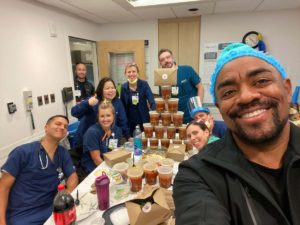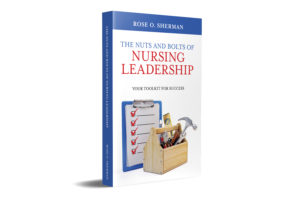By Rose O. Sherman, EdD, RN, NEA-BC, FAAN
We have lost our rituals, a charge nurse recently told me. She observed that “before COVID in our unit, we ate lunch together, took breaks together, and celebrated birthdays and baby showers……we don’t do any of that now, and the culture has become so impersonal…..no wonder everyone is angry.”
The significance of this observation is captured in the new book, Rituals Roadmap, by Erica Keswin who points out that rituals are an evidence-based practice of building more cohesive teams. Rituals mean something to people and help us to connect in meaningful ways. When rituals are lost, our connections to one another become weaker. Rituals like celebrations or meals revitalize us in ways that other things don’t. It is why so many families during COVID are struggling with their grief and closure because a memorial service to honor the life of their loved one has not taken place.
Keswin defines a ritual as a sequence of repeated symbolic actions over time and is formalized into the fabric of team culture to maintain group cohesion. Rituals help build psychological safety because they are designed to promote inclusion. Rituals can be a powerful reinforcement of an organization’s values and make staff feel like they are part of something special. Without them, teams struggle to build meaning in their work.
I would contend that the loss of rituals with social distancing in healthcare environments is an important reason for staff turnover and discontentment. A perioperative director explained to me that food has always been a central part of perioperative cultures. Her unit had long-standing breakfast rituals before the start of COVID but no longer. She misses those days as it really helped bond the team and integrate new team members. Like many leaders, she is especially concerned about the new staff because of the loss of rituals that were part of onboarding. Most of her organization’s orientation is now virtual. Her new nurses no longer personally meet the CNO or tour the medical center. She sees a big difference in the level of staff attachment to the organization. There is very little “social glue” holding things together.
As part of rebooting after the COVID experience, we need to think intentionally about re-establishing old rituals and adding new ones. One ritual to consider is how to close the door on an experience like COVID, where there have been so many staff losses. Some areas to rebuild rituals include the following:
- Nurse recognition
- The onboarding of new staff
- The beginning of meetings
- Team meals and snacks
- Social events outside of work
- Charity walks and drives
- Professional development and achievement such as certification
Any ritual started should add value, enhance feelings of psychological safety and improve performance. A good place to start redesigning your rituals is to examine your organization’s core values. Keswin advises that leaders should ask staff for their ideas about rituals, especially in light of the nursing workforce’s significant demographic shifts.
Rituals help to restore our humanity and civility – qualities needed at this time.
Read to Lead
Keswin, E. (2021). Rituals roadmap: The human way to transform everyday routines into workplace magic.
© emergingrnleader.com 2021
Launch 2021 by giving your leadership team the gift of a highly rated webinar – Nursing Leadership in 2021: Rebooting after a Life-Quake A Nursing Leadership Reboot Workshop
Read the Nurse Leader Coach – Available at Amazon and Other Book Sellers.
Coming Soon a New Book to Strengthen Your Leadership in 2021 – The Nuts and Bolts of Nursing Leadership: Your Toolkit for Success




 LinkedIn
LinkedIn Instagram
Instagram